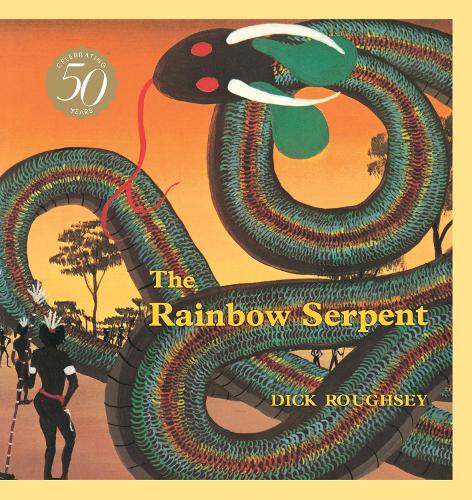
The Rainbow Serpent 50th Anniversary Edition
(Hardback)
Available Formats
Publishing Details
The Rainbow Serpent 50th Anniversary Edition
By (Author) Dick Roughsey
HarperCollins Publishers (Australia) Pty Ltd
HarperCollins Publishers (Australia) Pty Ltd
1st May 2024
Australia
Classifications
Children
Fiction
Childrens / Teenage fiction: Classic fiction
Childrens / Teenage fiction: Nature and animal stories
Childrens / Teenage general interest: Communities, places and peoples
Physical Properties
Hardback
32
Width 247mm, Height 262mm, Spine 9mm
373g
Description
Celebrating fifty years - a timeless classic from the Dreamtime.
Dreamtime stories tell how the Rainbow Serpent came from beneath the ground and created huge ridges, mountains and gorges as it pushed upward. The name also reflects the snake-like meandering of water across a landscape and the colour spectrum sometimes caused by sunlight hitting the water.
Renowned author and artist Dick Roughsey's first paintings were on bark using the traditional pigments from soil and black from charcoal. After developing these bark paintings into a form suited to paper, he began to create children's books, including The Rainbow Serpent, an enduring classic that celebrates the paintings of the Rainbow Serpent that first appeared in Arnhem Land rock art more than 6000 years ago.
Author Bio
Dick Roughsey (Goobalathaldin) (1920-1985) was born on Mornington Island, Queensland, and named Goobalathaldin. A member of the Lardil 'tribe', he was one of five brothers and grew up in an Aboriginal family clan, leading a traditional lifestyle. Aged eight Goobalathaldin was sent to a mission and given the name Dick. Educated at the mission school until he was thirteen, Roughsey then worked as a stockman on southern Gulf of Carpentaria cattle stations. In the 1960s Roughsey and his elder brother Lindsay (Burrud) initiated a style of bark painting depicting Lardil sacred histories. After meeting airline pilot, Percy Trezise, Roughsey developed a finer painting technique that resulted in him creating the now-classic picture books, The Giant Devil Dingo (1973) and The Rainbow Serpent (1974). Roughsey won the CBCA Book of the Year awards in 1976 and 1979. He was the founding chairman (1973-76) of the Australian Council for the Arts's Aboriginal Arts Board, and from 1974-75 served on the council of the Australian Institute of Aboriginal Studies.
